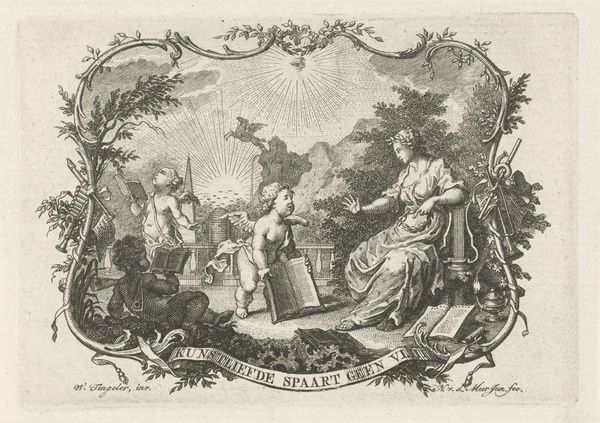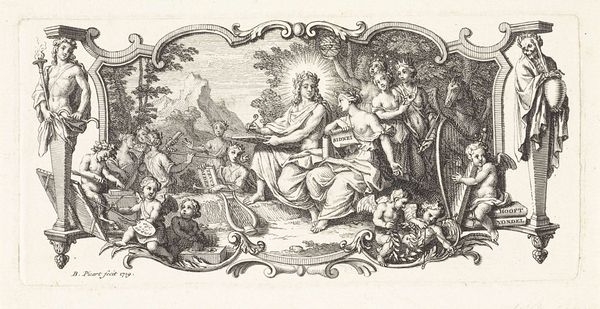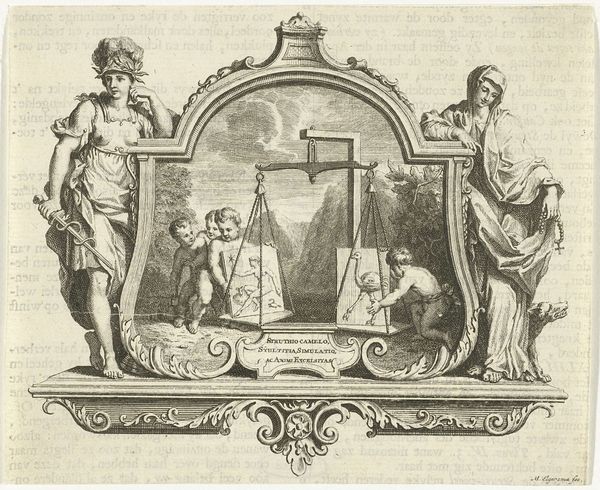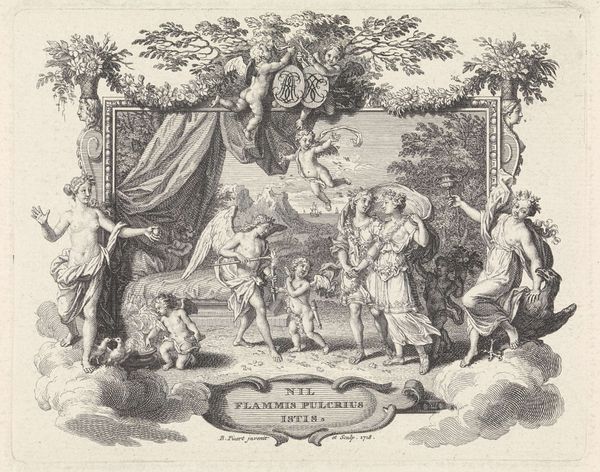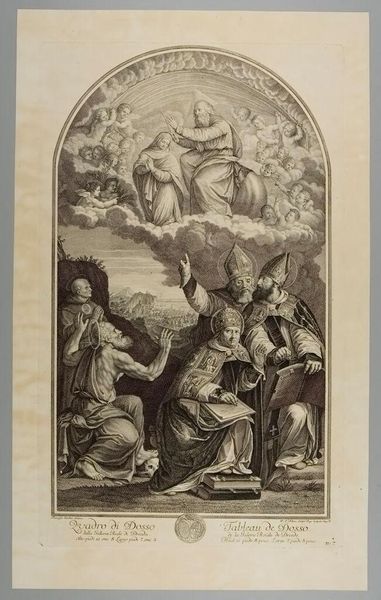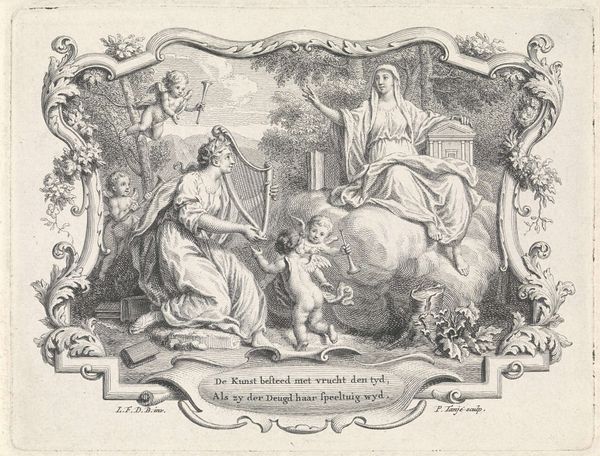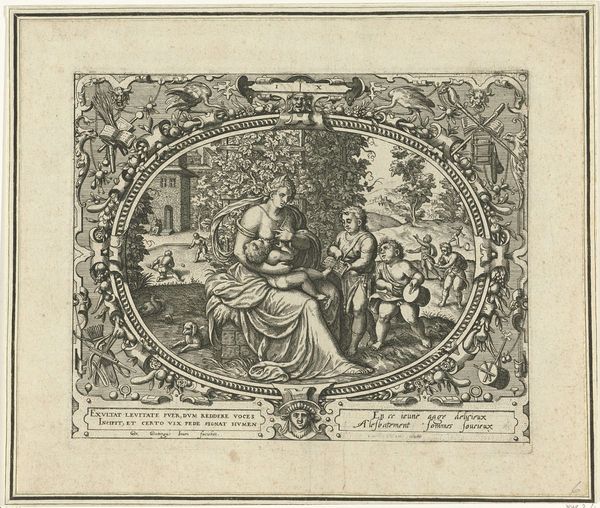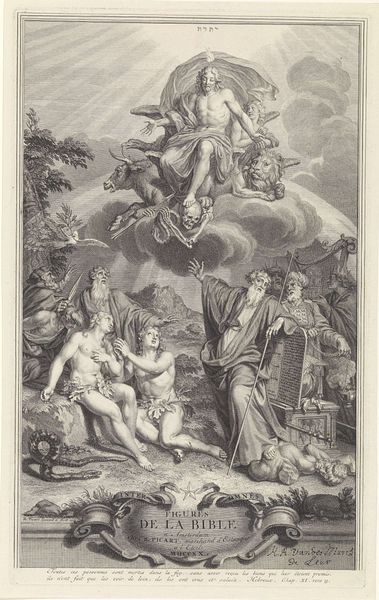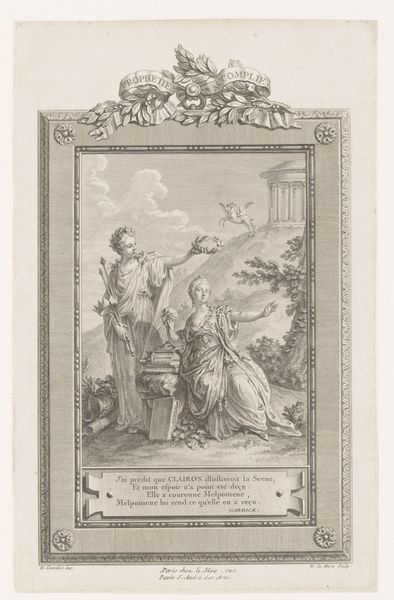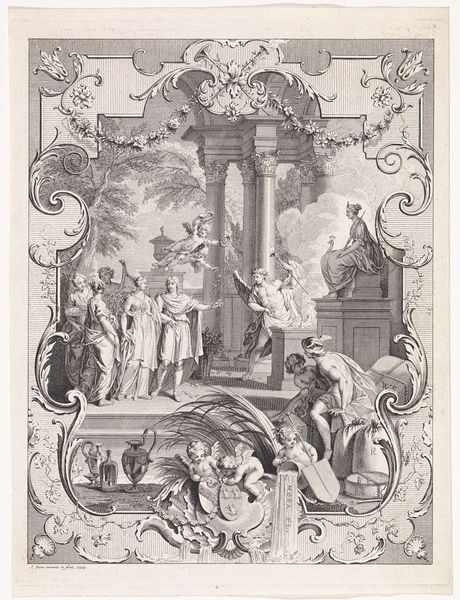
Tamar toont de staf en ring van Juda en Jozef benoemd tot onderkoning 1683 - 1733
0:00
0:00
drawing, ink, engraving
#
drawing
#
narrative-art
#
baroque
#
ink
#
genre-painting
#
history-painting
#
engraving
Dimensions: height 95 mm, width 170 mm, height 102 mm, width 135 mm, height 381 mm, width 245 mm
Copyright: Rijks Museum: Open Domain
Curator: Before us is an intriguing piece titled "Tamar toont de staf en ring van Juda en Jozef benoemd tot onderkoning," dating back to the period of 1683 to 1733. Bernard Picart is credited with creating this drawing using ink and engraving techniques. It is currently held in the collection of the Rijksmuseum. Editor: The ornate border is immediately striking. It really contains the scene, gives it the feeling of something precious and carefully considered. There's a clear spatial dynamic created with this framed theatrical stage of sorts, wouldn’t you agree? Curator: Absolutely, the border is integral. Look at the dramatic postures of the figures—Judah, with his sweeping gesture, and Tamar presenting the staff. The artist expertly uses light and shadow to heighten the drama inherent in the narrative. In terms of iconography, objects such as a ring or staff speak volumes and give the whole a weight with broader meaning. Editor: Indeed, observe the strategic placement of the fire in the background, which directs the gaze from left to right across the image. The scene itself feels like a complex stage, set off in distinct spatial zones that support how we visually read the composition. It is meticulously structured, which in my opinion only contributes to a higher degree of its appeal and function. Curator: Right! The symbolism, though… the staff and ring are powerful symbols of authority and identity—emblems laden with meaning in the context of this biblical narrative. These visual symbols speak to inheritance and recognition within the community. The artist deftly employs objects to trigger culturally resonant meanings. The careful construction reflects Picart's deep engagement with biblical themes. Editor: His commitment to balancing textual integrity and artistry seems pretty significant, making each line feel meaningful and part of a coherent, purposeful structure. Curator: Considering its era, this work bridges genre and history painting traditions effectively through composition. Editor: This little drama carries enormous aesthetic and emotional weight. I’m left admiring the mastery apparent in the printmaking skill, the layering, and shading that together amplify narrative intensity so impressively. Curator: Indeed. It reveals an early modern preoccupation with interpreting sacred texts through a refined, visual vocabulary. Editor: A splendid intersection of story and execution!
Comments
No comments
Be the first to comment and join the conversation on the ultimate creative platform.

